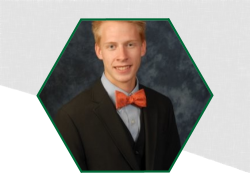As printed circuit boards (PCBs) are becoming more compact and densely integrated, the implementation of machining processes on them become increasingly challenging. PCBs are typically multilayered, made up of dissimilar materials, where stack ups and imbedded traces are generally used to save space and operating power. The machining of PCBs demands machining tools and techniques that are precise, flexible, and controllable more than ever.
Femtosecond (fs) lasers are among the most promising tools for tackling such challenges. With laser pulses shorter than the electron and phonon relaxation times in solids, the fs laser irradiation can induce material ablation and removal in a remarkably precise and controlled manner. As more powerful, stable, and compact fs laser systems emerge in the market, there has been an increased interest to develop fs laser micromachining techniques for processing PCBs with both high quality and efficiency.
Equipped with a 100 W Amplitude Tangor laser, a 3-axis translation stage, two 2D galvo scanners, as well as a precSYS 5-axis sub system, we have built up a fs laser multitasking machining center. The Tangor laser provides a wide range of tunable parameters, including the pulse repetition rate from a single shot to 330 kHz, the pulse duration from ~10 ps down to ~400 fs, and the dual wavelengths at 1030 and 343 nm, respectively, while the stages and scanners provide high-speed scanning and rotating capabilities. Based on that, we have been developing multiple processes for micromachining of PCBs.
As examples, we will introduce our recent progress in fs laser machining of PCBs made of low-temperature co-fire ceramics (LTCC) and glass fiber-reinforced epoxy laminates (FR4). We have realized precise drilling of zero-taper holes and vias on LTCC, and layer by layer depth-controlled material removal on FR4. Comparative study on the influence of laser parameters and drilling parameters on the hole geometries and edge qualities has been conducted. Holes with dimensions and depth of 10-102 µm have been drilled on LTCC, reaching tapers as low as 1.5Ë. Thorough testing of the removal rates of different materials on FR4 has been performed, aiming for a uniform removal of dissimilar materials to desired depths with a clean and smooth finish. The imbedded traces have been effectively revealed through such a depth-controlled removal process, with the taper on the removal area being controlled to be as low as 3% and the surface roughness of the revealed traces to be around 3 µm.
Keywords
- Femtosecond Laser
- Micromachining
- Printed Circuit Boards

